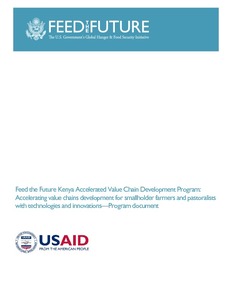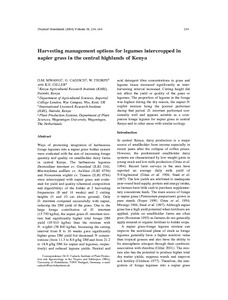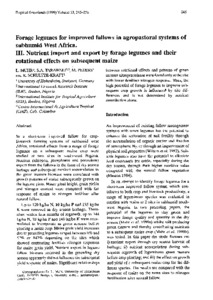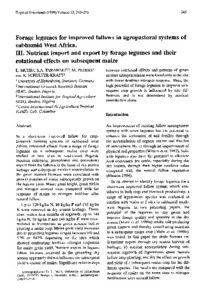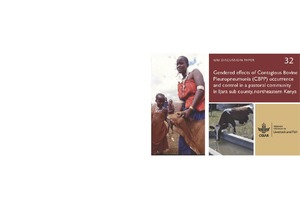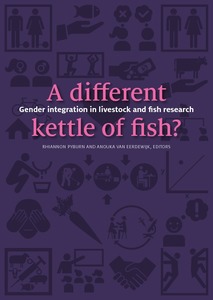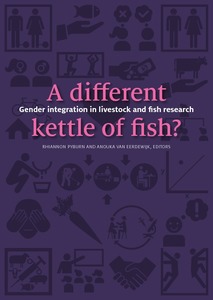Forage legumes for improved fallows in agropastoral systems of subhumid West Africa. II. Green manure production and decomposition after incorporation into the soil
A short-term improved fallow system based on forage legumes for enhancing crop and livestock components of mixed farming systems was tested in the subhumid zone of West Africa. As part of the evaluation, the ability of 11 legume species (Centrosema macrocarpum, C. pubescens, Stylosanthes guianensis, Pueraria phaseoloides, Mucuna pruriens, Zornia glabra, Dioclea guianensis, Arachis pintoi, Aeschynomene histrix, Calopogonium caeruleum, Flemingia macrophylla) to accumulate biomass and nitrogen after dry season harvest of herbage was assessed at 2 sites in south-west Nigeria.
Forage legumes for improved fallows in agropastoral systems of subhumid West Africa. III. Nutrient import and export by forage legumes and their rotational effects on subsequent maize
In a short-term improved fallow for crop-livestock farming systems of subhumid west Africa, rotational effects from a range of forage legumes on a subsequent maize crop were studied at two sites in south-west Nigeria. Nutrient (nitrogen, phosphorus and potassium) export from the fallows in the form of dry season herbage and subsequent nutrient accumulation in the green manure biomass were correlated with growth patterns of maize subsequently grown on the legume plots.
Forage research in smallholder and pastoral production systems
Discusses the use of forage legumes in the contexts of seasonality of other feeds particularly natural pastures and crop residues, the seasonality in animal movements, the competitiveness for land and labour of forage legumes, and the complementarity of forage legumes with other feeds in smallholder as well as pastoral production systems in sub-Saharan Africa. Ends with research implications & recommendations.
Fodder bank: Improving the nutrition of cattle in the subhumid zone of West Africa
ILCA acknowledged the potential for increased animal agriculture in the subhumid zone of West Africa by establishing a research base at Kaduna in northern Nigeria. FulBe agropastoralists were selected at the target group because they own most of the cattle in the zone and cattle are the predominant livestock, at least in terms of biomass and traded products. After consultation with experts, farm surveys, and a simulation analysis, ILCA chose to focus the research on overcoming the dry-season nutrition constraint.
Fodder banks: For pastoralists or farmers
Outlines the principles and practices of fodder-bank establishment and management in the sub-humid zones of West Africa. Summarises data that indicate the benefit of fodder banks to subsequent crops.
Forage legumes for improved fallows in agropastoral systems of subhumid West Africa. I. Establishment, herbage yield and nutritive value of legumes as dry season forage
A short-term improved fallow system based on forage legumes is suggested for crop-livestock farming systems in subhumid West Africa targeted to enhance soil fertility and dry season feed for cattle. At two sites, 13 legume species were compared with the natural fallow vegetation, the nutritive value of which typically fails to meet cattle requirements during the dry season. Establishment, dry matter yield and nutritive value of leguminous herbage in the year of establishment were evaluated as well as regeneration of legumes after a cropping phase.

